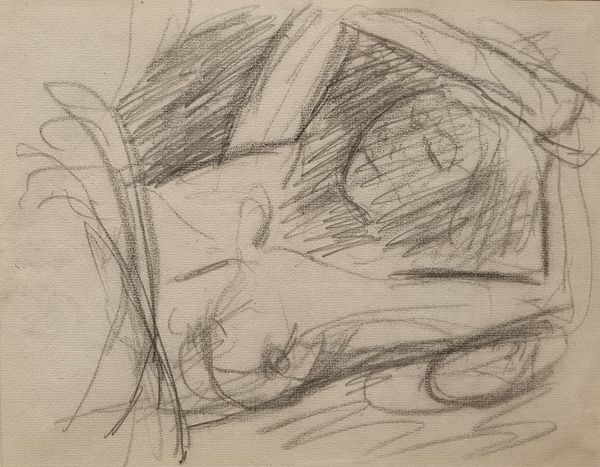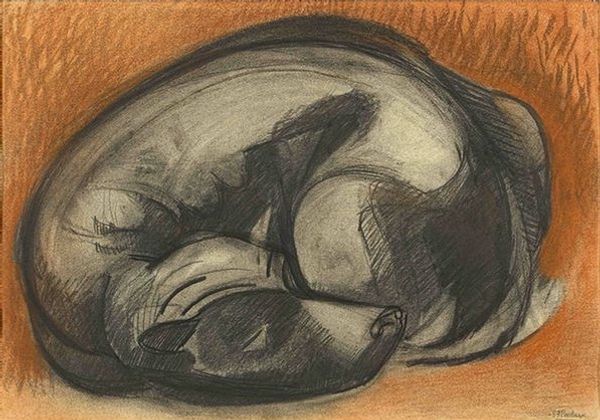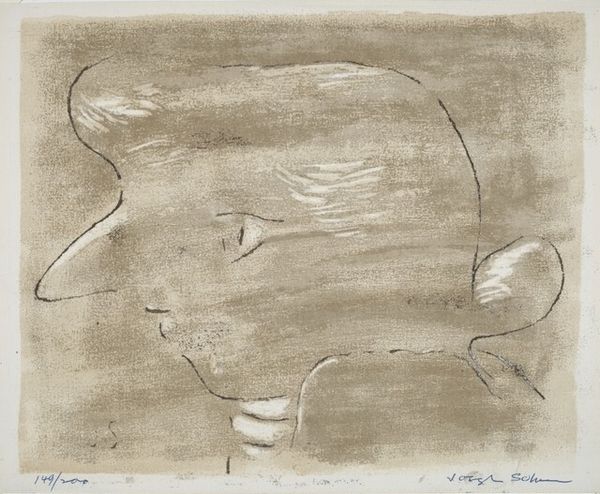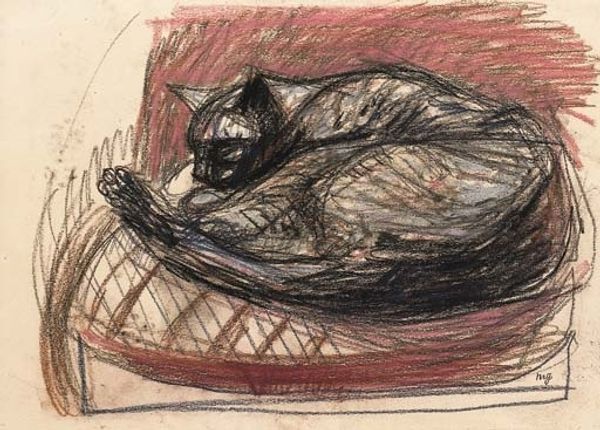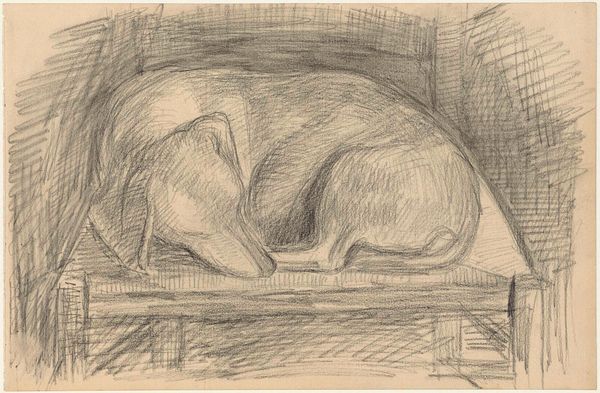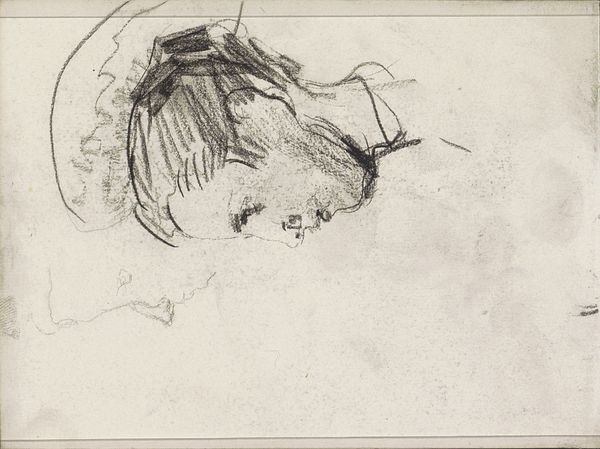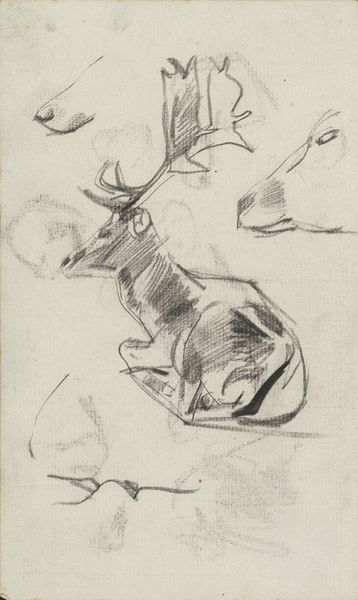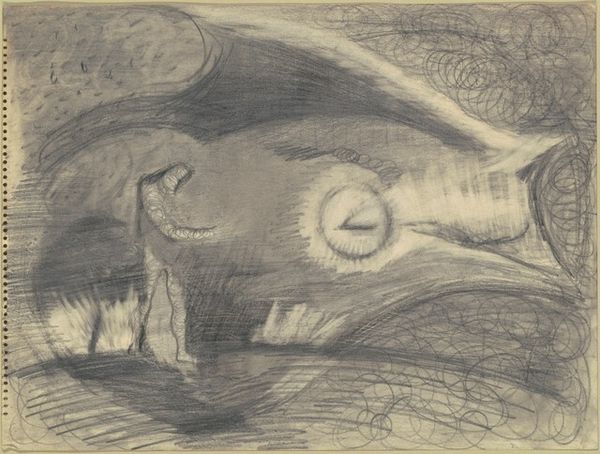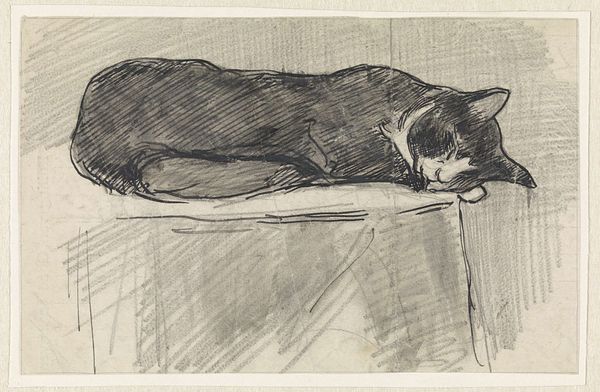
drawing, paper, pencil, charcoal, pastel
#
portrait
#
drawing
#
figuration
#
paper
#
pencil
#
charcoal
#
pastel
#
realism
Copyright: Bela Czobel,Fair Use
Curator: Here we have "Lila Macska" which translates to "Purple Cat" by Béla Czóbel. It's rendered with charcoal, pencil, and perhaps a hint of pastel on paper and measures approximately 25.5 by 29 centimeters. Editor: My initial reaction is one of peaceful repose. The charcoal creates a soft, almost dreamy effect, even though the lines are quite bold in places. I’m struck by the cat’s curled form – a perfect image of feline comfort, seemingly unburdened by any societal pressure. Curator: Precisely! Czóbel was working in an era deeply shaped by expressionism and, later, the École de Paris, where artists grappled with capturing not just the visible world, but also the inner emotional landscape. So this domestic scene, a seemingly simple portrait, gains complexity. Cats were a motif that emerged from deep ties of connection with the subject. Editor: Thinking about the cat's posture within that socio-political framework… is it perhaps a silent commentary on domesticity, a space often relegated to the feminine sphere? Does this cozy picture subvert ideas around imposed social constraints and find value within an accessible representation? Curator: Absolutely! Animals were historically tools for women to enter artistic careers - the space of "genre scene" was viewed as harmless or hobby-like in the context of the canon-building art world, providing a window into social issues through indirect lenses. The drawing, despite its realist portrayal, challenges the hierarchy, quietly elevating the everyday – and every body. It asks us to consider whose experiences, human and animal, are deemed worthy of artistic attention. Editor: It reminds us how art, even in its quietest forms, engages with broader questions of existence. Beyond its charm, this is more than just an appealing drawing; it's a dialogue on representation and societal biases. Curator: Indeed. It is fascinating how a quick drawing can elicit thoughts about art history, socio-economic conditions and identity politics. It’s an intimate yet resonant portrait. Editor: It’s made me rethink assumptions about the everyday. Now I'm pondering my relationship to power structures at play in the world of image production!
Comments
No comments
Be the first to comment and join the conversation on the ultimate creative platform.
